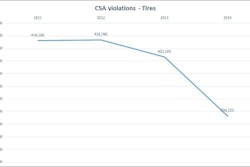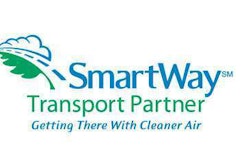MacKay & Company is honored to now be providing a regular monthly column for Truck Parts & Service. Some of you may remember Stu MacKay who wrote several columns for TP&S a few years ago.
The good news is that I will not be the only one writing this column. Stu will again be contributing as will several others from MacKay & Company.
While MacKay & Company provides market research and consulting services on both the original equipment and aftermarket sides of the commercial vehicle market, given the focus of this publication, our columns will primarily (we may go astray from time to time) focus on the medium- and heavy-duty parts and service aftermarket.
MacKay & Company tracks a number of factors which either impact the aftermarket and/or help us understand the size and trends in the aftermarket. We also spend a significant amount of time gathering insights from owner-operators, fleets, and parts and service providers (OES and independent). When possible, we will pass on what we are learning and hearing through this column.
Twelve columns a year is a little intimidating, so we are open to suggestions for column topics — industry related, of course. I don’t think we need any more perspectives on global warming, Middle East unrest and the presidential election, but maybe a couple columns on the Kardashians would be okay.
Each column will have the MacKay & Company writer’s contact information, so if you are inclined, you can follow up with them directly with any questions, comments or stern words.
Most of our columns will focus on the aftermarket. At MacKay & Company we defi ne the aftermarket as any parts replacement (or repair) or service (including maintenance) activity which is nonwarranty after the vehicle is initially sold. This includes parts replaced (or repaired) in-house or at a service provider.
But enough about us!
Next month we will have our first column on the aftermarket, but this week I would like to introduce a new term to the industry: beforemarket. I am sure this term will be used as an industry standard for at least the next 30-45 seconds.
Beforemarket refers to all the actions a company that is in the business of selling parts and/or services should do to be successful in the aftermarket.
This includes truly understanding the customers in your market: what is their business, how many vehicles do they have, what is the age profile of their vehicles (trucks and trailers), what is their typical vehicle buying and selling practice, do they typically buy new or used vehicles, what are their in-house service capabilities (tools and people), what make of trucks and engines do they own, who are the key decision makers?
Anything and everything that helps you better understand your customer (and in turn help them) makes you a better supplier specifi cally to their needs. In addition, ask yourself if they know about your business, capabilities, hours and people.
This should be an on-going activity, because people, policies and practices change. You’re just wasting your initial efforts if you don’t keep up with the changes.
Beforemarket also refers to making sure your people have the tools and knowledge to correctly sell your products and services. If you have more than one brand of products, do they understand the differences and goals of the brands? Does your team know the products, capabilities and services for the parts of the business they are not involved in? It is not easy, but good, consistent beforemarket efforts are likely to provide better aftermarket results.
John Blodgett has worked for MacKay & Company for more than 20 years and is currently vice president of sales and marketing, responsible for client contact for single and multi-client projects. He can be reached at [email protected]










